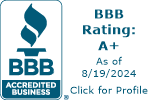 Medicare has several types of enrollment periods. Open enrollment periods can vary for Part A (Hospital Insurance), Part B (Medical Insurance) as well as for Medicare Supplemental plans, Medicare Advantage (Part C) plans and Medicare Prescription Drug (Part D) plans. Important time sensitive restrictions apply.
Medicare has several types of enrollment periods. Open enrollment periods can vary for Part A (Hospital Insurance), Part B (Medical Insurance) as well as for Medicare Supplemental plans, Medicare Advantage (Part C) plans and Medicare Prescription Drug (Part D) plans. Important time sensitive restrictions apply.
Before you can get a Medicare Supplement or Medicare Advantage plan, you first have to get both Medicare Part A (hospital insurance) and Medicare Part B (outpatient insurance). Timing wise, individuals are well advised to apply for Medicare Part’s A & B with the Social Security Administration two months before their Medicare eligibility start date. For most people, Medicare Part A has no premium, whereas Medicare Part B does have an income based monthly premium, though exceptions may apply for those on Medicaid.
The initial Open Enrollment Period begins when when:
- Individuals turn 65 and enroll in Medicare Part A & B
- Individuals over 65 whose employer sponsored health insurance coverage ending through their or a spouse’s employment and are enrolling in Medicare Part A and/or B. Individuals over 65 may already have Part A, but they will have to apply for Medicare Part B.
- Individuals under age 65 may become eligible for Medicare and apply for Medicare Part’s A & B if they are disabled and have received Social Security Disability Income payments for 24 months. Not all Medicare Supplement companies offer coverage to those under 65, so be sure to do your research and/or work with a broker.
During this initial open enrollment period you have a widest selection of Medicare coverage options and Medicare Supplement, Medicare Advantage and Part D insurance companies can not deny you coverage or charge a higher premium based on your health history, except for tobacco usage.
It is important to note that the guarantee issue period for Medicare Supplements lasts for six months starting with the month you turn 65 and is a one-time enrollment period. After this period, you may not be able to buy a Medicare Supplement policy, or it may cost more. It does NOT repeat every year, like the Medicare Open Enrollment Period.
Get personalized help applying for Medicare and information on Medicare Supplemental plans
A Medicare General Enrollment Period for Original Medicare (Parts A & B) is available for those who missed their initial open enrollment period. They can sign up for Medicare Part’s A and/or B between January 1st and March 31st each year. However, late enrollees may have to pay a late enrollment penalty for not enrolling when first eligible, so this is far from ideal.
Medicare Annual Open Enrollment for Medicare Advantage and Part D plans runs from October 15th through December 7th of each year. During this time, you can join, switch or drop a plan, with the new coverage taking effect on January 1st of the following year. This period does not apply to Medicare Supplements, which are medically underwritten after the guarantee issue period ends.
Medicare Advantage also has a Continuous Open Enrollment Period annually from January 1st through March 31st.
If you enrolled in a Medicare Advantage Plan during your Initial Enrollment Period, you can change to another Medicare Advantage Plan (with or without drug coverage) or go back to Original Medicare (with or without a drug plan) within the first 3 months you have Medicare. Also, between January 1st and March 31st it may be possible to make a one time change to a new Medicare Advantage plan or disenroll from Medicare Advantage and return to Original Medicare. Limitations and restrictions apply.
Medicare Special Enrollment Periods for Medicare Advantage and Part D plans can also apply for a variety of circumstances including:
- Leaving coverage through an employer, union or COBRA plan
- Address changes that impact your Medicare plan or options
- Moved back to the US after living outside the country
- Loss of eligibility for Medicaid
- The Medicare contract is terminated and plan ends 12/31/2023
- The Medicare Advantage Plan, Medicare Cost Plan or Prescription Drug Plan isn’t renewed / plan ends 12.31.2023
Medicare Special Enrollment Periods for Medicare Supplement plans can also apply during your “Trial Right Period” for Medicare Advantage and change back to Original Medicare during your first year of joining a Medicare Advantage plan.
Many rules and stipulations apply, as per the Medicare.gov website.
Check with a Broker to help you better understand your options. Get personalized help applying for Medicare and information on Medicare Supplemental plans





